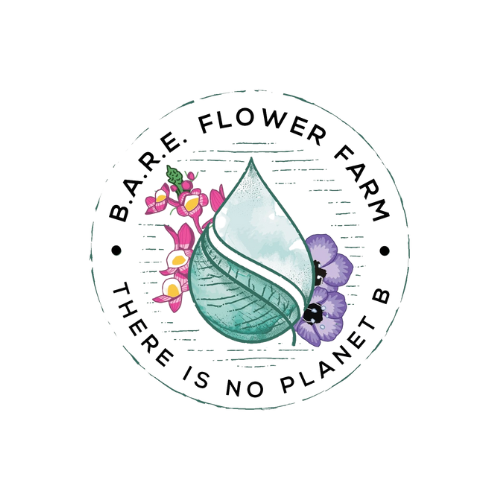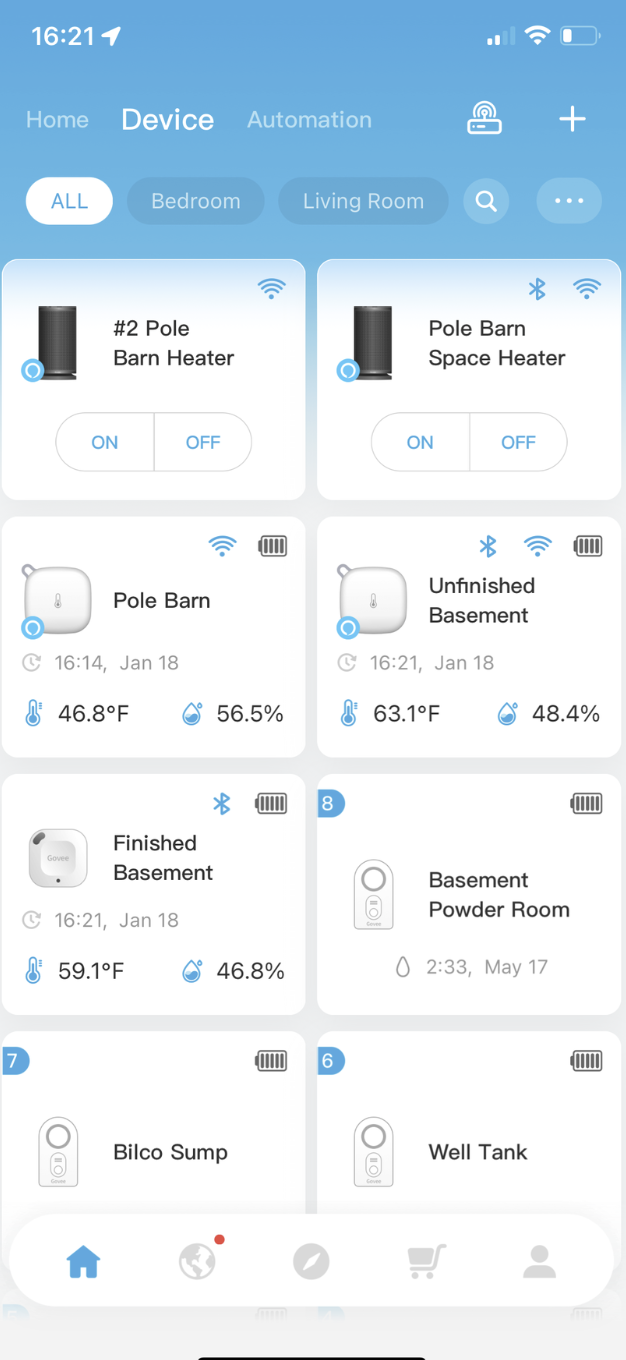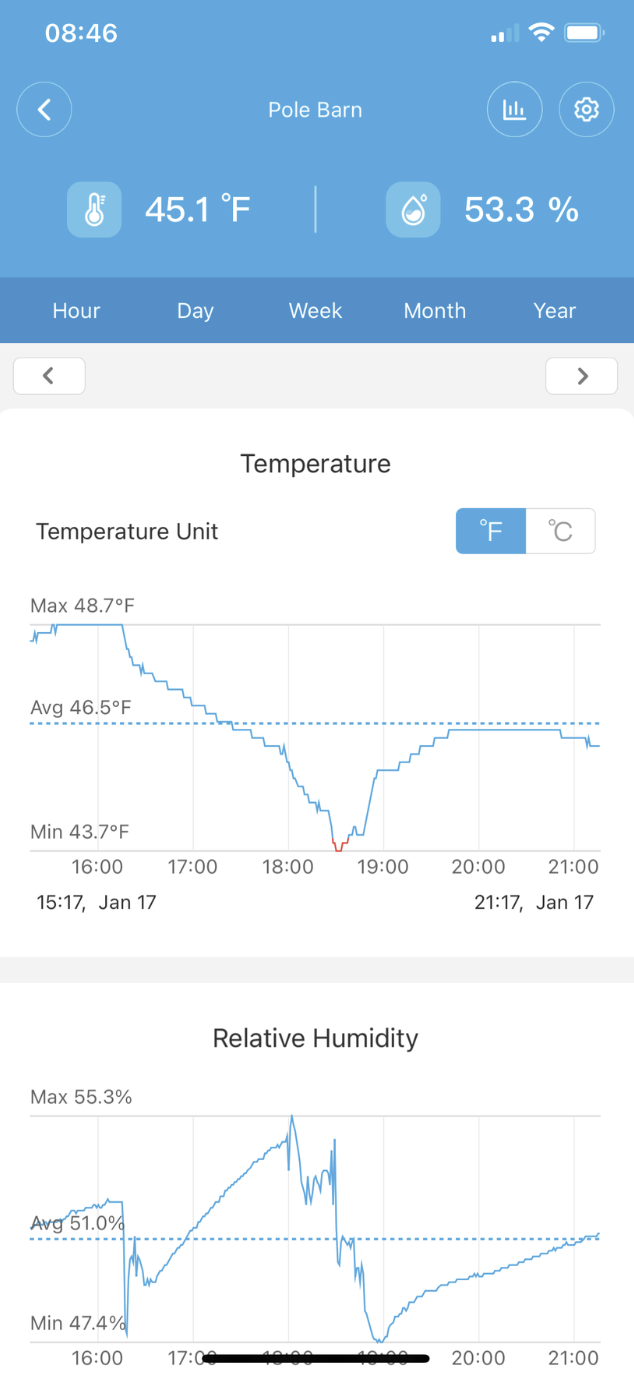Sensors & monitoring your grow space
With the polar vortex setting in on much of the country, it is important that I monitor the temperatures especially in the pole barn where I have lilies rooting, tulip bulbs storing, and hydroponic trays rooting.
I get alot of questions about what system I was using so I figured I would talk a bit about that in detail here. Please note that this is not a paid post by Govee- we just happened to love the Govee suite of products and continued buying into their "ecosystem".
About the sensors:
There are many brands out there that help you track temperature and humidity. Whatever brand you choose, just stick with that. Typically, the brands have an "ecosystem" and you can check all of your sensors in one place via an app.
We have personally loved using Govee's products. At this point, we have bought many of their sensors, and all of them are available on Amazon. We have sensors in our fridges, unfinished basement area, finished basement area, and pole barn. Additionally, we even have a sensor that will trigger an alarm if there is water. They're labeled as "Bilco Sump", "Well Tank", "and "Basement Powder Room" in the screenshot. The "Basement Powder Room" sensor came in handy when I was a few weeks postpartum and neglected to turn off the upstairs powder room sink completely. The water dripped down through the flooring to the basement and luckily the sensor picked it up! The alarm rang at 3am, our dog heard it immediately, barked up a storm and we were able to stop the water damage before it got too serious! If you get water at all in a basement or area, have an old hot water tank, or old dishwashers/laundry machines, I would seriously recommend getting a sensor like this.
Most recently, we bought a Govee heater. It's a small, 1500 watt heater that is quite efficient. We were so impressed with it that we bought another one. Because it hooks up to the Govee ecosystem, I can turn it on or off through my phone and we can connect it to automatically turn on when the garage dips below a certain temperature. This happened last night! You can see below where the graph dipped red, at which point the heater kicked on and the temp rose back up. Although the heater has a built in temperature sensor, you can link it to an external Govee sensor for a more accurate reading which is what we did.
We are still testing how powerful 2 small Govee heaters are in an insulated 40x40 pole barn space and how long it takes for the temperature to rise. Eric works in the pole barn which is why the heater kicks on at 45F.
Don't skimp out...
There are different variations of sensors out there that range in price. The cheaper ones are typically bluetooth enabled. While cheap, it means that you need to be at home and within a certain radius of the sensor to get an updated reading. This isn't helpful if you're on vacation or at work and want to see how a growing space is doing! Because of that, we now spend extra to buy the "wireless" sensors that can update on your phone no matter where you are.
These are now my go to Govee sensors. These are wireless which means I can refresh the data anywhere.
Previously, these were the sensors I bought. They are about half the price of the wireless sensors but you pay dearly for what you save. They function through bluetooth so if you want to refresh the sensor reading, you must be within a certain radius (aka at home). Not helpful!
There is even a fancier version that displays the reading on a monitor which could also be helpful. It's relatively cheap ($15) bc it is bluetooth enabled. We haven't tried these but I've seen plenty of other growers use them!
Why do you need sensors?
Most people who are growing outside probably don't need sensors. But let's say you have a really old fridge that you're using as a cooler. A sensor could be helpful to see how cold (or warm) the fridge gets and even humidity levels. Humidity is particularly important to monitor for tulip forcing so this time of year, I am looking at my Govee app multiple times of day.
You could also find it helpful to see temperature patterns and general humidity levels in places like a garage or a greenhouse.
The good news is that these days, cost should not be a prohibitive factor in not getting a sensor should you need it. Buy a 3 pack and I guarantee you will find places where having a sensor will be helpful - for both growing an personal reasons!





